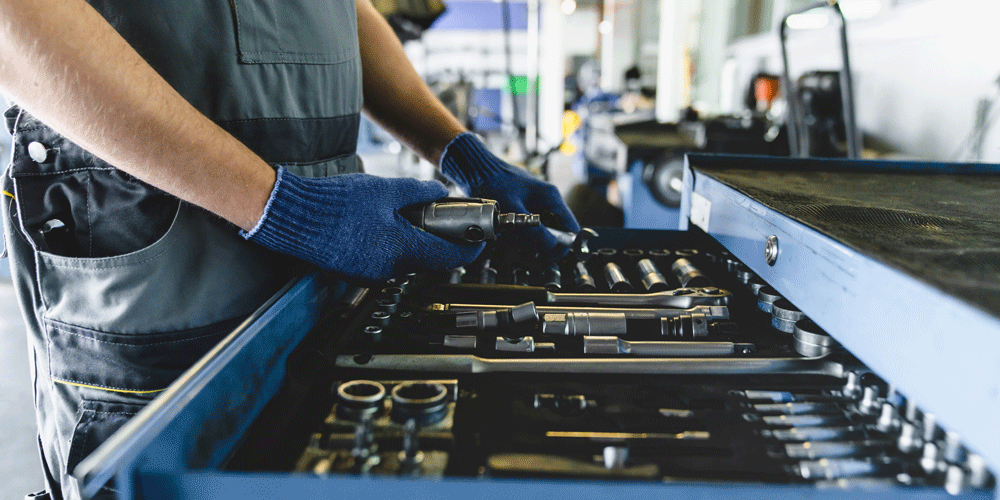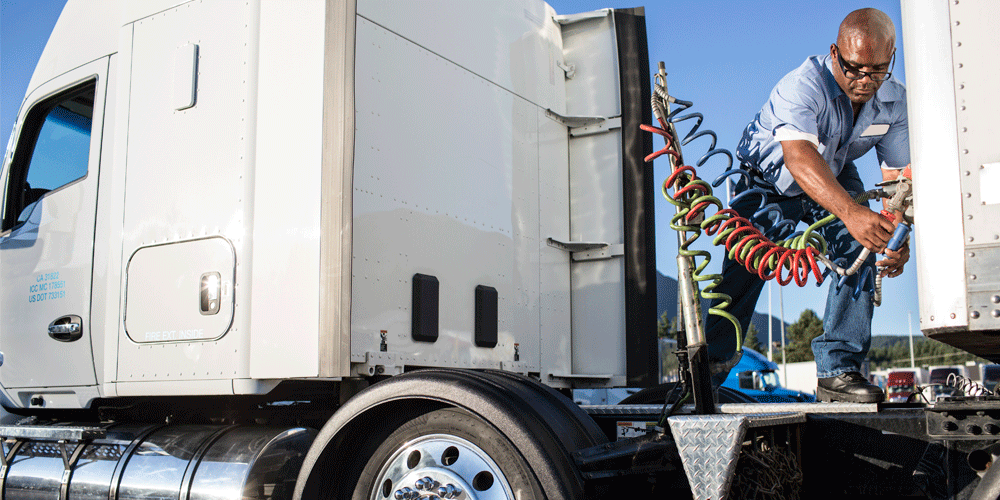Semi-Truck Repair Delays: Why Repair Times on Semi-Trucks Are Longer
Jason started with ATS in October 2010 as the prep shop foreman running the unmanned trucks department. He eventually moved into the service shop foreman position and then the trailer shop service leader role. He is currently the shop manager at ATS, a position he has held for just over four years.
Wondering why it takes so long for semi-truck repairs? Well, you and every other truck driver waiting in the shop are wondering the same thing.
When you’re stuck at the shop, you’re not making money. You might get some financial support if you’re a company driver, but as a lease driver you’re not only paying for repairs but you’re also losing money on all the loads you could be hauling.
It’s easy to become frustrated with the shops and technicians for taking so long, but it’s important to remember that heavy-duty truck and trailer shops across the country are facing the same problem.
The trucking industry isn’t the same as it was five years ago. Among the things we’ve recently seen change are parts delays, older fleets and labor shortages in the shops.
I’m the shop manager for Anderson Trucking Service (ATS) in our St. Cloud, Minnesota shop, so I have intimate knowledge of what’s happening at shops, dealerships and original equipment manufacturers (OEMs) across the country.
In this article, I’ll break down the two primary reasons heavy-duty truck and trailer shops are dealing with slowdowns and why truck drivers are waiting longer for their trucks to be repaired. This includes:
- Labor shortages
- Parts shortages
I’ll also help you understand what you can do to help navigate this issue.
The Two Factors Slowing Down Semi-Truck Standard Repair Times
There are two primary factors slowing shops down and preventing you from getting your repaired semi-truck back sooner rather than later. It’s typically quicker to get in the shop for basic repairs, but if your truck requires any sort of diagnostic work, it can take two weeks to even get in the shop. Then drivers need to get in line for repairs. Just a few years ago, it usually only took a couple of days to get an appointment slot at the shop.
Factor #1: Labor Shortages
The most significant trend we’re seeing in our shop right now and hearing from others in the industry is labor shortages.
Simply stated, there's a shortage of skilled, vocationally trained diesel technicians across the country. We’re especially seeing it in Central Minnesota — where ATS headquarters is located — but it’s an industry-wide issue. Fewer people are pursuing vocational degrees in diesel mechanics and entering the field. As a result, shops are understaffed and overbooked.
Sure, shops have internship and mentorship programs that’ll train inexperienced technicians and teach them the skills of the trade, but that takes time. Technicians need to be certified to do specific maintenance, diagnostic and warranty work. Trucks are very high-tech nowadays and require experienced technicians to diagnose issues.
Additionally, trucks have extended warranties on them now, which is excellent, but to meet warranty requirements, you need to take your truck to a certified dealer or shop with technicians who are certified to do warranty service. If you take your truck to a shop without technicians who have those skills and certifications, you can void your warranty.
And when you do get into a shop with warranty-certified technicians, you’ll be waiting in a long line. A technician may diagnose the truck and order the part, but then they have to get approval on the repair from the OEM. The OEM may suggest a list of things for them to check instead of immediately replacing that part. Then the OEM has to approve the repair before technicians can do it.
It can take days for the OEM to get back to the technicians. This can significantly delay the process — especially when you add in the delay for parts to arrive.
The labor shortage is so significant that many places that used to be open 24/7 have limited their hours. They’re no longer open all night and close on the weekend. Shops that had technicians working second and third shifts may only have a staff of first-shift workers now. And even if there are two shifts, if there isn’t a warranty-certified technician on one of the shifts, that can delay repairs.

Factor #2: Parts Shortages
Truck and parts shortages were a major issue during the pandemic for a variety of reasons. While the truck shortage has balanced itself out some and new trucks are a little easier to get, we’re still dealing with parts shortages. This has a major impact on semi-truck repair time.
Parts are on national backorder. When technicians call the parts distribution centers to order a part, they’re told the part is on national backorder. The parts distribution centers don’t know when they’ll get the parts in. This is a problem all shops are dealing with. You simply have to wait in line to get the parts.
Related: What truck shortages mean for drivers
Overcoming Parts Shortages and Repair Delays
Shops and drivers are dealing with a lot of issues all at once. First, you have to wait in line to get your truck in the shop. Diagnostics can take a while once it’s in the shop and then you may have to work with parts delays. Then, it actually needs to be fixed. So what are you supposed to do in the meantime?
While you’re waiting for repairs, some drivers do a short-term lease on a truck just to get moving. Some drivers take vacation time and go home while others recover trucks that have been abandoned by other drivers in the fleet.
You certainly can’t foresee a breakdown and it never comes at a great time. To overcome this, you can stay on top of your service intervals. Be proactive and schedule them ahead of time and then plan them around your downtime. Getting those service intervals taken care of can prevent some bigger issues from occurring.
If you’re facing a breakdown on the road, keep in mind that it can cost significantly more to fix it over the road than it will to fix it at your company’s shop. In some cases, it can be cheaper to put the truck on a trailer and haul it back to headquarters or a terminal for it to be fixed at your company.
Related: My truck broke down, now what?
Prevent Breakdowns
The extended repair times for semi-trucks stem from two primary factors: labor shortages and parts shortages. The trucking industry has undergone significant changes in recent years, impacted by both pandemic-related disruptions and evolving market dynamics.
Labor shortages are particularly evident, with a scarcity of skilled diesel technicians available to diagnose and repair the advanced technological systems found in modern trucks.
Furthermore, parts shortages have compounded the issue, with national backorders causing delays in obtaining essential components for repairs. This bottleneck affects all shops across the industry, causing drivers to wait in line for parts and making overall repair timelines even longer.
Overcoming these challenges requires proactive planning, including scheduling service intervals ahead of time and coordinating repairs during available downtime.
While breakdowns remain unpredictable, taking a proactive approach to maintenance and being prepared for possible downtimes can mitigate the impact of these challenges and contribute to smoother operations in the long run.
Check out these tips for preventing costly breakdowns.


